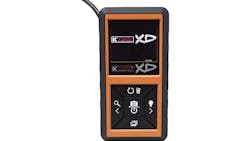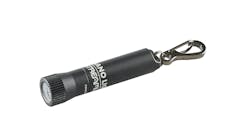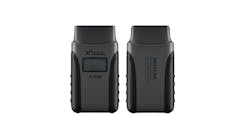Content brought to you by PTEN. To subscribe, click here.
Q: How did the tool function as far as saving you time?
A: It gives the ability to see inside and behind objects to have a better idea on what to disassemble. For example, on some Kia/Hyundai blind spots, you need the last two digits of the serial number to see the angle of the radar. The borescope made it much faster to read the sticker with less removal of parts.
On a Nissan, I was able to get a picture of the QR code. Then I had my phone read the QR code from the tool screen, which saved about 20 minutes of taking parts off and on.
Q: What kind of setup was involved before using the product?
A: The only setup is to install four AA batteries, which are not included.
Q: How easy was it to use?
A: Just turn it on—the video automatically comes on. The light and zoom are adjustable with the buttons on the bottom half of the tool. Overall, it was simple to use.
Q: How was the product packaging? Did it come with any accessories?
A: The box is nice. It holds the tool and keeps it safe. Inside the back cover are clips that can go on the camera. I am unsure about the purpose of two of them, but the other one is a 45-degree reflector, which I used a few times.
Q: Was there a manual included?
A: The tool comes with a basic quick start guide, which includes button functions and standard warnings about proper usage. Although easy to understand, it does lack an explanation of the camera attachments.
Q: What features did you like?
A: The ability to take pictures is a notable feature. The device requires nothing to store these pictures as it has built-in memory to store up to 30 pictures. It would be useful to recall a picture to show a customer.
Additionally, the digital zoom was effective and the ability to adjust the light through six brightness levels made the tool more usable in some reflective areas.
Q: Is there any way you could think to improve or add to this tool?
A: Overall, the picture quality is okay. I would suggest developing a way to send pictures or save them externally, for attachment to invoices later.
I would suggest a further explanation of the three camera attachments, either in the instruction manual or a website or QR link to a demonstration.
A storage bag would be advantageous if only to keep dust and dirt off the tool while stored.
Q: What types of jobs did you use this tool for?
A: Overall, I found it most useful for ADAS and checking to ensure connectors were plugged in. One specific example is a BMW fuse box buried in the back of the glove box. By seeing into the back of the glove box, I more quickly found the necessary number to check the fuse. It sounds like a silly application of the tool, I know, but it sure saves time in hunting for fuses on those cars!
Similarly, the solenoid code and strategy number on Ford transmissions for front wheel drive vehicles can be buried. Using this tool to snap a picture of the code saved considerable time.



